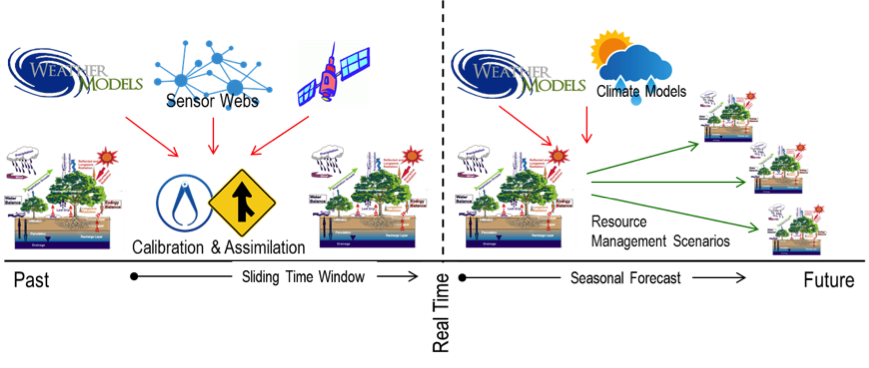
Diagram shows how sensors will collect and transmit data for the project.
George Mason University’s Fairfax campus combines the urban aspects of roadways, parking lots, and high density housing, with forests, fields, and streams. However, when these urban elements replace and dominate the natural land cover, they disrupt water systems.
“Our Fairfax campus often experiences the effects of weather events (heavy rains, hurricanes, winter storms, etc.), making it a perfect laboratory for monitoring and advancing our knowledge of infrastructure resilience and vulnerability during extreme weather,” said Vivian Maggioni, assistant professor in the Sid and Reva Dewberry Department of Civil, Environmental and Infrastructure Engineering. “The richness of streams and the mixture of urban and natural landscape make it an ideal location for water resources research activities.”
Maggioni is working with faculty, students, and Mason’s Office of Sustainability to develop a smart sensor web that enables an interconnected low-power method of collecting environmental data at the Fairfax campus. The sensors, located in three different gardens and the campus greenhouse, will provide real-time environmental monitoring during extreme weather events as they monitor the growth of 10 Daikon radish plants.
“This framework will provide insights towards the next generation of real-time environmental monitoring for large facilities and infrastructure management,” said Maggioni.
By using geographical awareness, weather forecast models, and decision protocols the network can adapt to and observe rare, rapidly changing events. It can also dynamically adjust collective sampling rules to observe changing conditions and event dynamics and conserve resources during slowly changing conditions.
Maggioni said there are numerous goals for the network including: discoveries on the dynamics of rapidly changing stormwater pollution events; reducing uncertainty in quickly changing conditions; enabling emergency management response and reduction of staff risk; reducing measurement error; improving network sustainability and resilience; providing constant site wide conditions monitoring; and improving modeling capabilities for the campus in the classroom and for facilities management.
Team Members:
Viviana Maggioni, Paul Houser, Celso Ferreira (faculty)
Jeremy Johnston, Asbina Rahman, Melissa Rossi (graduate students)
Donielle Nolan (Office of Sustainability)
